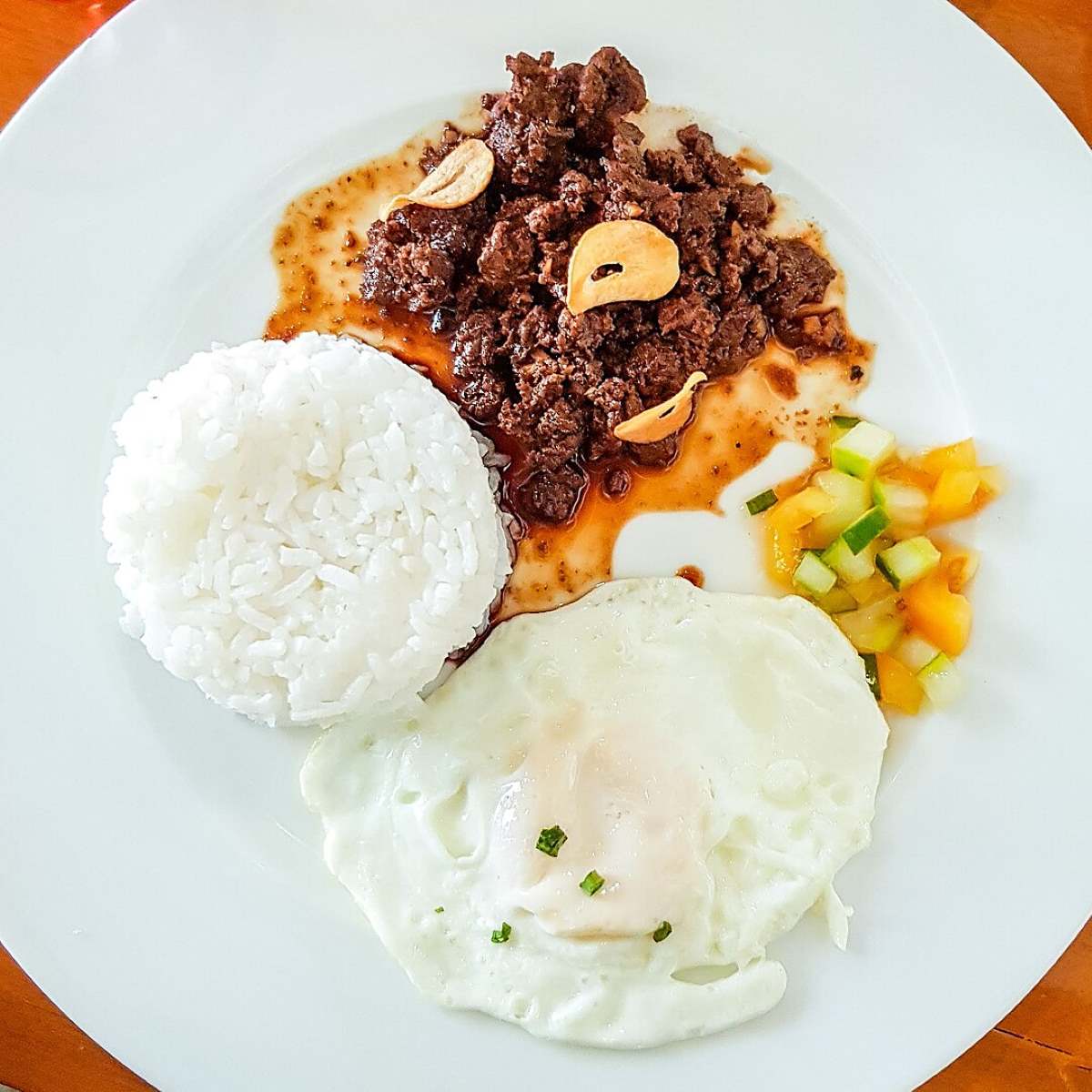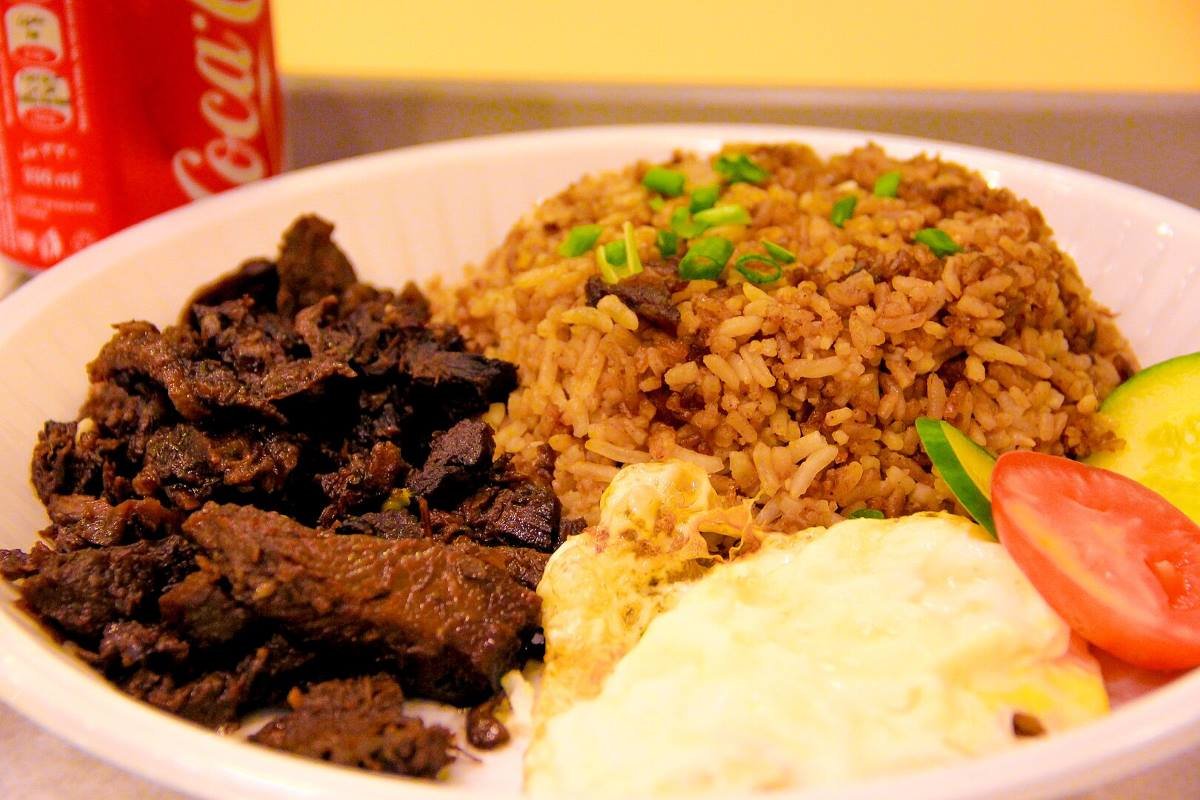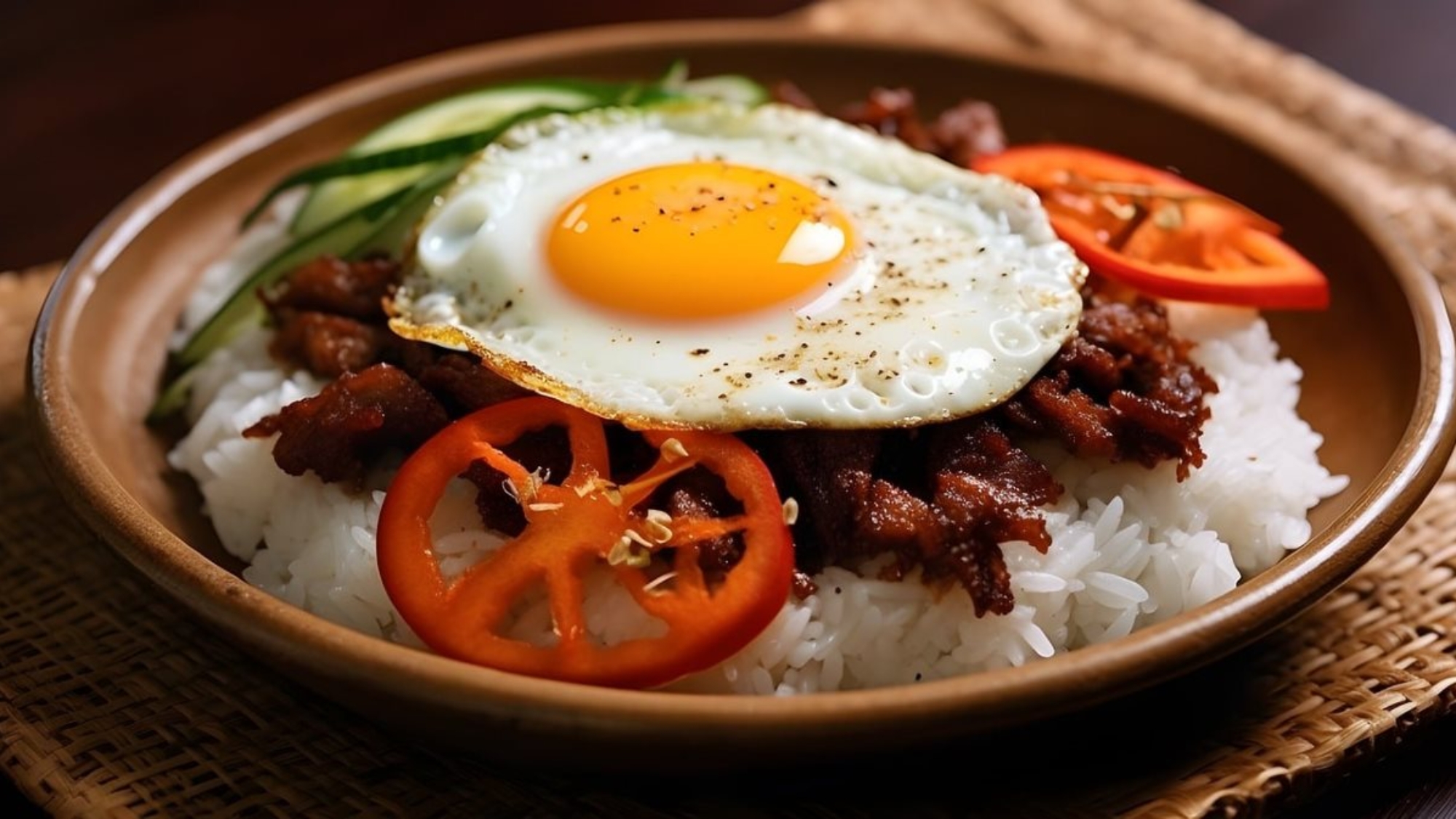Tapsilog: A Filipino Breakfast Delight You Can't Miss
If you ever find yourself wandering through the Philippines, the ultimate local breakfast dish you’ve got to try is Tapsilog. It’s not just any breakfast; it’s a culinary icon that has captured the hearts and taste buds of many. Imagine waking up to the savory aroma of grilled marinated beef (TAPa), garlicky fried rice (SInangag), and a perfectly sunny-side-up egg (itLOG). It’s a dish that’s more than just a meal—it’s a hearty introduction to Filipino hospitality and flavors. Whether you’re a backpacker looking to fuel up before an adventure or a foodie on the hunt for an authentic local experience, this all-time favorite dish offers the perfect balance of taste, tradition, and satisfaction.
The Origins and Evolution of Tapsilog
A Breakfast Staple with Humble Beginnings
Tapsilog has deep roots in Filipino culture, dating back to when tapa was a method of preserving meat in salt and drying it under the sun. This practice was common among rural communities, particularly in regions like Luzon, where preserving food without refrigeration was crucial. Over time, this dried meat evolved into a marinated dish, combining a mix of soy sauce, calamansi juice, garlic, and sugar. This marinade gave the tapa its distinct sweet and savory taste, making it a popular protein choice for many Filipinos.
In the late 1970s and 1980s, this dish began to gain widespread popularity, especially in Metro Manila, thanks to the rise of local eateries and street-side food stalls known as “carinderias”. These small food businesses started offering budget-friendly meals for workers and students. With its simple but hearty combination of tapa, sinangag, and itlog, it became an affordable yet filling option for many. What started as a humble breakfast special soon became a Filipino comfort food staple, symbolizing the simple joys of everyday life.
Cultural Significance of This #1 Breakfast Meal
Beyond being just a breakfast dish, Tapsilog represents the Filipino spirit of creativity and resourcefulness. Families would often prepare tapa using leftover beef or pork, marinating it overnight and cooking it fresh the next day. Serving at family gatherings, fiestas, or Sunday breakfasts became a tradition in many Filipino homes. It wasn’t just about eating; it was a way for families to bond and share stories over a simple yet satisfying meal.
What’s fascinating is that the dish even became a symbol of resilience and hope during tough times. For Filipinos, food is not just sustenance—it’s an emotional connection and a piece of their identity. Whether it’s for breakfast or late-night cravings, it offers a taste of comfort and a slice of home.

The Ingredients that Make Tapsilog Special
Key Ingredients and Their Roles
Tapa, sinangag, and itlog may seem like simple components, but they each play a crucial role in this dish. Tapa is usually made from thinly sliced beef marinated in a blend of soy sauce, calamansi juice, garlic, and a hint of sugar. This combination brings out a sweet and savory profile with a zesty kick. Some prefer their tapa a bit salty, while others like it more on the sweet side, depending on the regional influences.
Meanwhile, sinangag is the humble yet flavorful garlic fried rice that ties the dish together. Leftover rice is stir-fried with garlic and a pinch of salt to create a fragrant and slightly crispy rice base. Its simplicity allows it to absorb the juices of the tapa and the yolk of the itlog, creating a mouthwatering medley of flavors.
Finally, there’s itlog, which is typically a sunny-side-up egg. The egg yolk, when runny, mixes beautifully with the sinangag, giving the dish a creamy, luxurious texture. It’s not just an add-on; the itlog elevates the overall flavor experience.
Cooking Techniques that Matter
The preparation of Tapsilog isn’t complicated, but it’s all about achieving the right balance of flavors and textures. The secret to a delicious tapa is in the marinade. Allowing the beef to soak in the sauce overnight helps infuse the meat with all those rich flavors. Slow cooking over low heat is crucial to achieving that tender, slightly caramelized texture.
Here’s a simple, easy-to-follow recipe to make this scrumptious dish at home:
Ingredients:
– 500g beef sirloin, thinly sliced
– 1/4 cup soy sauce
– 1/4 cup calamansi juice (or lemon juice)
– 4 cloves of garlic, minced
– 2 tablespoons sugar
– 1 teaspoon ground black pepper
– 3 cups leftover rice
– 4 eggs
– 2 tablespoons cooking oil
– Salt, to taste
Cooking Instructions:
- Marinate the beef: In a bowl, combine soy sauce, calamansi juice, minced garlic, sugar, and black pepper. Add the sliced beef, making sure every piece is coated well. Cover and refrigerate for at least 4 hours, but overnight is ideal.
- Cook the beef tapa: Heat oil in a frying pan over medium heat. Fry the marinated beef in batches, cooking each side until browned and slightly caramelized. Set aside.
- Prepare the garlic rice: In the same pan, add a bit more oil if needed. Sauté minced garlic until golden brown and fragrant. Toss in the leftover rice and stir-fry until well combined with the garlic. Season with salt to taste.
- Cook the eggs: Fry the eggs sunny-side-up style. For a runny yolk, cook on medium-low heat and cover the pan for a minute.
- Assemble the Tapsilog: On a plate, serve a generous portion of sinangag alongside the tapa and the fried egg. Add a side of atsara (pickled papaya) for that refreshing tang.

Perfect Pairings and Regional Variations
Best Drinks and Condiments
Tapsilog is best paired with refreshing beverages like calamansi juice or a classic iced tea to balance the savory flavors. Filipinos also enjoy having a cup of hot coffee with their breakfast, creating that comforting start to the day. As for condiments, spicy vinegar is the go-to dip for tapa. The vinegar cuts through the richness of the meat and adds a layer of zing that keeps you coming back for more.
If you’re feeling adventurous, you can explore regional versions of this all-time favorite dish across the Philippines. In the Ilocos region, they sometimes substitute the beef tapa with longganisa, giving you Longsilog—a garlicky, slightly sweet sausage variant. In Pampanga, known as the culinary capital of the Philippines, you might encounter Tocilog, featuring caramelized tocino (cured pork). Each region’s twist offers a unique flavor experience that reflects the local culture.
Cultural Etiquette and Eating Tips
In Filipino culture, eating with your hands, known as “kamayan,” is encouraged for dishes like Tapsilog. This hands-on approach adds a layer of intimacy and connection with the food, allowing you to savor every bite fully. When eating at local eateries, don’t be surprised if people mix their fried egg with rice before taking a spoonful of tapa—it’s all about blending the flavors and textures.
For a truly immersive experience, try eating this dish in a local carinderia or a roadside eatery. These places offer not just the food but also a slice of everyday Filipino life. Sit alongside locals, and you might even learn some insider tips on the best places to eat in town.
Health, Nutrition, and Where to Best Savor The Dish
Nutritional Aspects and Dietary Adaptations
If you’re health-conscious, you’ll be glad to know that Tapsilog can be modified to fit your dietary needs. Beef tapa is a good source of protein, and you can opt for lean cuts to reduce fat content. Additionally, you can prepare sinangag using brown rice for a higher fiber intake. For vegetarians, you can swap out the tapa with marinated tofu or mushrooms to create a “Tofasilog.”
However, it’s essential to be mindful of potential allergens. The tapa marinade typically contains soy sauce, which may not be suitable for those with soy allergies. Also, the dish may contain gluten due to the soy sauce, so gluten-sensitive individuals should seek out alternative marinades or gluten-free soy sauce.
The Best Places to Experience “Tapa”, “Sinangag” and “Itlog”
When it comes to finding the best Tapsilog in the Philippines, a few places should be on your list. For an authentic experience, head to Tapa King in Metro Manila. This restaurant has been serving this favorite dish since the 1980s and is known for its signature sweet-salty tapa. Another popular spot is Rodic’s Diner in the University of the Philippines, Diliman, which offers a shredded tapa version that’s perfect for mixing with the rice and egg.
If you’re looking for a unique dining experience, try visiting floating restaurants in the province of Pangasinan or Batangas, where you can enjoy savoring it with scenic views of rivers and lakes. Eating with a view adds that extra charm, making your meal even more memorable.

Why Tapsilog is a Must-Try in the Philippines
It is not just a meal; it’s an authentic slice of Filipino culture served on a plate. When you travel to the Philippines, experiencing the local cuisine is an essential part of immersing yourself in the country’s culture. And it stands out as a quintessential Filipino breakfast, deeply rooted in the nation’s traditions. But what makes this “all-time favorite” a must-try dish? Let’s dive deeper into the reasons why this simple yet flavorful meal should be at the top of your Filipino food bucket list.
- A Window into Filipino Breakfast Culture
In the Philippines, breakfast isn’t just about fueling up for the day—it’s a time to savor and share. Tapsilog embodies this Filipino approach to breakfast. Filipinos love hearty, flavorful breakfasts that bring families together, and it is the perfect example of this. Made up of tapa (marinated beef), sinangag (garlic fried rice), and itlog (fried egg), the dish is the cornerstone of many Filipinos’ mornings. It’s a meal that offers comfort and nostalgia, evoking memories of leisurely weekend breakfasts at home with loved ones. For tourists, tasting it is like being invited to a Filipino breakfast table—a genuine experience of Filipino warmth and hospitality.
- Simplicity with Big, Bold Flavors
Despite its simplicity, it packs a punch when it comes to flavor. The key lies in its components: tender beef tapa marinated to perfection with a combination of soy sauce, calamansi juice, garlic, and sugar, bringing a balance of sweet, salty, and tangy flavors. Pair that with the savory crunch of garlic fried rice and the creamy richness of a sunny-side-up egg, and you’ve got a dish that’s both comforting and exciting to the palate. The bold and well-balanced flavors of the dish are what make it memorable and unique, leaving a lasting impression on anyone who tries it for the first time.
- An All-Day Delight
Another reason why the all-time favorite Filipino breakfast is a must-try is its versatility as a meal. Traditionally served as a breakfast dish, it has now become an all-day favorite across the Philippines. Whether you’re craving a substantial meal for lunch, dinner, or even a late-night snack after a night out, Tapsilog is always a great option. Many Filipinos enjoy it at 24-hour eateries known as Tapsihan, where it’s served hot and fresh at any hour. This makes it a convenient and satisfying choice for anyone looking to indulge in Filipino cuisine at any time of the day.
- The Essence of Filipino Ingenuity and Adaptability
This favorite dish also represents Filipino ingenuity and adaptability in the kitchen. The combination of tapa, rice, and egg may seem straightforward, but it showcases the Filipino knack for creating delicious and comforting dishes from simple ingredients. The roots lie in the Filipino practice of using cured meats like tapa to preserve food and extend its shelf life, especially during the pre-refrigeration era. This preservation technique, combined with the need for hearty meals to fuel daily labor, eventually gave rise to Tapsilog. It’s a testament to the Filipino way of life, where resourcefulness and creativity come together to create something truly flavorful.
- A Cultural Experience Beyond the Plate
Eating this dish is more than just enjoying a good meal; it’s a way to connect with Filipino culture and its values. The dish is a reflection of the Filipino spirit—simple yet warm, humble yet full of character. Sharing a plate with friends or family is an act of salusalo (gathering), where the joy of eating is enhanced by the company of others. It’s common to see Filipinos sharing this meal during relaxed weekend breakfasts or bonding over the dish after a busy workday. Trying Tapsilog while in the Philippines is like being a part of these everyday moments that capture the essence of Filipino life.
A Taste of Filipino Hospitality
In the end, it isn’t just about the flavors—it’s about the hospitality, the warmth, and the stories that come with it. When you visit the Philippines, having a meal of Tapsilog is like being welcomed into a Filipino home. It’s a dish that speaks of tradition, togetherness, and the simple joy of good food. Whether you’re savoring it at a cozy roadside Tapsihan or a beachfront eatery, it is guaranteed to give you a taste of Filipino hospitality at its finest.
Must-Try Variations
One of the reasons why the dish is so beloved is its adaptability to different regional tastes. Across the Philippines, you’ll find variations like Chicken Tapsilog (using marinated chicken instead of beef) or Pork Tapsilog. Some regions also add their own local twist to the marinade, incorporating different spices or even mixing in sweet and tangy sauces. So, while you’re in the Philippines, don’t miss the chance to try the different versions available in different areas—you’ll discover a new flavor adventure in every bite!
Price Range, Servings, and Customizations
Tapsilog is widely accessible and fits different budgets, making it a favorite across all social classes. In roadside eateries or local carinderias, a plate of the meal can cost as low as ₱50.00 to ₱100.00 ($1 to $2), offering excellent value for money. In mid-range cafes and family-style restaurants, you can expect to pay around ₱150.00 to ₱250.00 ($3 to $5), while upscale dining establishments might offer a premium version for around ₱300.00 to ₱500.00 ($6 to $10). Regardless of where you try it, you’ll find that the all-time favorite Filipino breakfast delivers on taste and value.
The typical serving size for Tapsilog is a single plate, but in Filipino dining culture, sharing dishes family-style is common. If you’re dining with friends or family, consider ordering multiple silog variations to try, like Longsilog (with Filipino sausage) or Bangsilog (with Bangus fish). This way, everyone gets to experience a little bit of everything, making for a richer culinary adventure.
If you want to customize your Tapsilog experience, many eateries are happy to accommodate your preferences. You can request your tapa to be cooked less sweet or extra crispy or ask for additional sides like atsara (pickled papaya) or sliced tomatoes. The versatility of the meal allows you to tailor it to your liking, so don’t hesitate to explore different combinations until you find your perfect plate.
Conclusion: A Taste of Filipino Tradition
To sum it up, Tapsilog is more than just a breakfast meal—it’s a celebration of Filipino heritage, flavors, and creativity. With its hearty serving of marinated tapa, garlicky sinangag, and runny itlog, this dish offers a culinary adventure that will leave you craving for more. Whether you’re enjoying it in a bustling local eatery, a family gathering, or an upscale restaurant with a view, it captures the heart and soul of Filipino comfort food.
So, if you find yourself in the Philippines or a Filipino restaurant abroad, don’t miss the chance to try Tapsilog. Let it be your introduction to the warmth and hospitality of Filipino cuisine—a dish that’s simple yet bursting with flavors, leaving you with a delicious story to tell.

